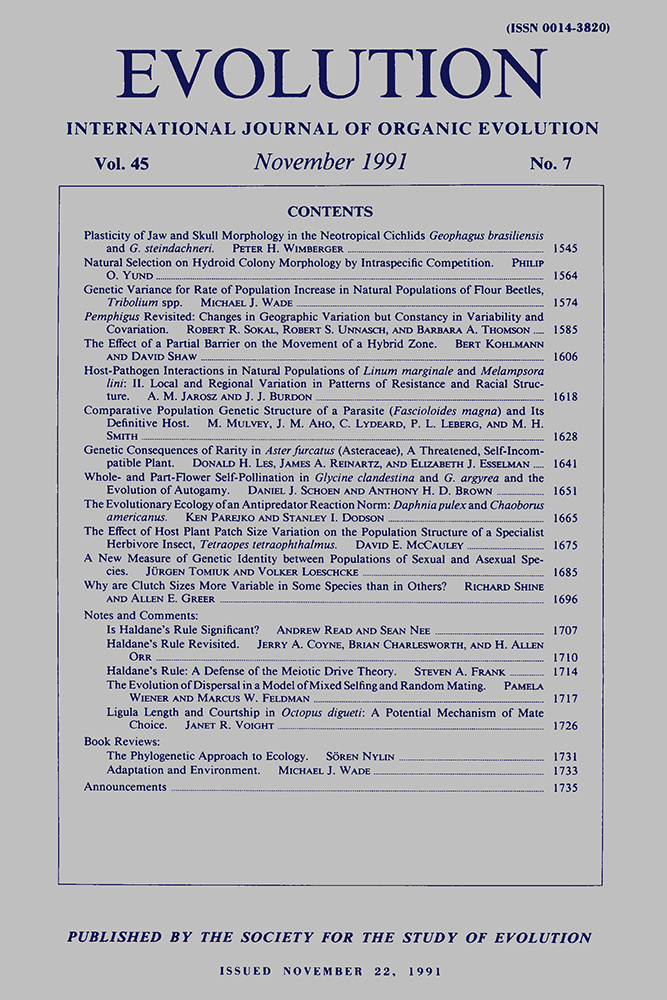PEMPHIGUS REVISITED: CHANGES IN GEOGRAPHIC VARIATION BUT CONSTANCY IN VARIABILITY AND COVARIATION†
Abstract
Samples of the gall-forming aphids Pemphigus populicaulis and P. populitransversus (both elongate and globular morphs) were re-collected at sites in eastern North America after 13 to 16 years. Twenty-three morphometric characters of the galls, stem mothers, and alate fundatrigeniae were analyzed by univariate and multivariate methods. Varying proportions of the variance of each character are attributable to the four levels of variation—locality, year, year by locality interaction, and among galls (within one year and locality). The year by locality interaction level generally has the greatest variation and is highly significant. Year and locality effects tend to be lower and not significant. The variance components do not exhibit trends with time. Geographic variation patterns of single variables or factor scores in the original and revisited populations show significant spatial structure overall but lack clear-cut spatial patterns, especially clines. Observable patterns of variation match results of the spatial analyses: most characters lack clear trends; patterns in the revisited data do not resemble patterns for the same variables in the original data. Variability profiles for characters change little over the time span and are comparable among and within localities. Covariation among characters over localities is largely maintained during the time interval despite the changes in patterns. Fluctuating interclonal competition among aphids on secondary hosts is believed to cause the marked heterogeneity in space and time among the aphids in the galls.




